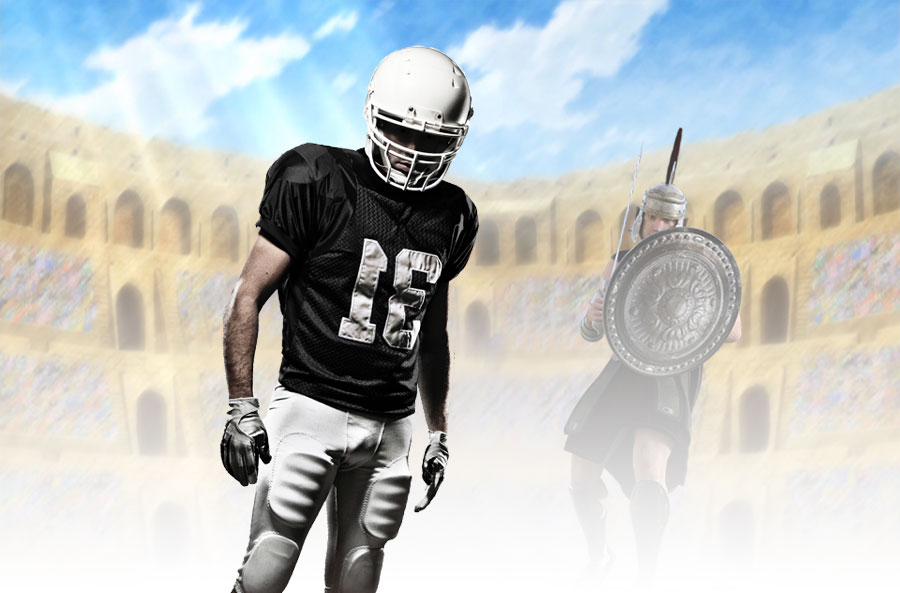Discovering Past Lives Using The Resonance Method
 by Michael Talbot
by Michael Talbot
The past-life places and things for which one tends to have the most resonance are the broader features of human existence. The exceptions to this rule are those things that have left a strong impression in the unconscious because of powerful emotional associations or repeated past-life exposure.
Go through the categories described in the following paragraphs, and every time you find an item for which you feel you may have a past-life resonance, mark it down on a page in your journal. [See how to journal for past lives here] That way you will have all of the fragments of possible past-life memories accumulated in one place so you can study them more easily when you set out to determine if they come together to form any larger patterns.
Cities and Countries
For obvious reasons, most people have powerful resonances for cities and countries in which they lived in past lives. Either run through a list in your mind, or glance at an atlas. In pondering this category it is useful to keep in mind that many place names have changed over the course of time, so the fact that you do not sense any resonance for an area’s current name does not mean that you have had no past lives in that area. For example, I do not sense any resonance for Germany, but I do for Prussia, a country that once occupied the northern region of what is now Germany but is no longer in existence. Similarly, you may not feel any resonance for Peking, but Peking was never known by that name to the people who lived there. To overcome this obstacle, you can try conjuring up a strong visual image of an area to see if you have any resonance with the image. You might even try looking at travel books for various regions of the world to see if you come across any images for which you feel a resonance.
You may also discover that you have resonance for places that you can intuitively see, but cannot name. For instance, you might have a special feeling for narrow streets paved in cobblestone, or for farmhouses, or mud-brick buildings, or buildings near water, or spacious city squares, or Gothic spires, minarets, or pagodas. You should keep notes of each of these as well.
In the same vein, you will find that occasionally you will have a powerful resonance for locations that you have no hope of identifying without further information. You may sense that you have lived in a jungle or rain forest during some life, or in a desert. You may feel very close to the mountains, or at home when you are near the ocean. Think about different areas of the world—tropical Pacific islands, rocky northern European seacoasts, Arctic tundra, African velds, rolling Midwest meadows, and snow-covered mountains—and see which of these you have resonance for.
Cultures and Time Periods
Another very rich area of investigation is the various time periods of history. Most people can immediately name at least two or three eras of the past that they have resonance for. Many have a fascination with ancient Egypt, others with the Russian Revolution, Elizabethan times, Biblical times, the American Revolution, the Old West, the Renaissance, 19th-century Paris, the Middle Ages, the Civil War, native North American cultures, Victorian London, Imperial Rome, Mozart’s Austria, the Mayan civilization, Genghis Khan’s China, the Crusades, ancient Middle East cultures, or Arthurian England. Frequently people can look at the type of books they prefer to read or the pictures they have chosen to put on their walls and discover that they have returned again and again to a specific time period. This is often an indication of a past-life association.
You may also find that you have resonances that you cannot place in time. You may realize that you have a powerful sense of having lived in India, but you may not know enough about Indian history to know when. Or you may have a resonance for having walked among white pillars, but you do not know which ancient culture inspired the feeling. Go back through your thoughts and try to remember any cultural images that tugged at you strangely or which seemed to possess some mote of something that was familiar. These may include a feeling for the stained glass of churches, Japanese paper screens, life in a rural European hamlet, crowded Middle Eastern bazaars, baronial halls filled with red velvet curtains, life in an aboriginal or tribal setting, log cabins, smoky taverns filled with laughter and tankards of ale, stucco buildings and dusty, unpaved streets, huge balls with women in billowing dresses, lean-tos of branches covered with animal skins, the intrigue of a Far Eastern court, life in tents, quilting bees and barn raisings, caravans with camels loaded down with silk and spices, stone walls hung with tapestries, the arabesques of Islamic mosques, or gathering water from a communal village well.
Hobbies and Taste in Music and Art
The things you have chosen to collect or gather around you in this life can also indicate resonance. Have you always been drawn to things Japanese? Do you collect arrowheads, World War I mementos, pictures of sailing ships, Mexican pottery, French porcelain, African statuary, Victorian cameos, objects from Colonial America, Persian carpets, 1920s memorabilia, Civil War coins, books about ancient Greece or Russia’s imperial past? Have you always been fascinated by suits of armor or more comfortable if you have a stick of incense burning in the house?
As a school project or hobby did you ever feel drawn to constructing some unusual object, or perhaps some aspect of human life that was not from your current existence? For example, after I began to pay more attention to my past-life memories, I looked back over my childhood and saw that I had made a number of objects that were further expressions of the previous incarnations I was remembering, such as a small model of a medieval French monastery and a paper-mache sculpture of a Cambodian temple attendant replete with elaborate headdress. Dr. Ian Stevenson, a psychiatrist at the University of Virginia Medical School who has spent nearly three decades collecting and analyzing the case histories of children with past-life memories, writes of children who construct models of objects or scenes from their previous existences, such as a small boy in India who persisted in constructing models of a biscuit and confectionery shop he had owned in a former life.
Some of your tastes in music and art may also be the result of past-life associations. You may find that you have always been unusually drawn to Chinese art, or to the painting of a particular time period, such as medieval art, 19th-century French art, or Egyptian sculpture. Don’t be afraid to thumb through art books or consider art from widely disparate origins and periods such as African, Flemish, Babylonian, Renaissance, Indian, Art Nouveau, Greek, Islamic, Native American, Prehistoric, or Mayan art.
Examine your preferences and see if you have always had an unusual affinity for the music of a particular era of history. Just as we tend to associate various pieces of music with certain powerful events from our past in this life, specific pieces can also trigger past-life memories. For example, as a teenager, the first time I heard Rachmaninoff’s Vocalise I felt such a deep pull and sense of familiarity during a certain passage of the piece that I knew it had held some potent meaning for me during a previous life. By listening to the music while I meditated, I was able to evoke fragmentary images and pieces of information that were later corroborated by other past-life exploration techniques.
The potential for music to trigger past-life remembrances need not always be so specific. For instance, you may find that the music of a particular time period holds resonance for you, such as the music of the Baroqueera, the music of the 1920s, or church choir music. Remember, as with every thing in this section, no single item means anything by itself. But if you find that through your tastes in art and music, and other preferences, you have repeatedly gravitated toward the same culture or time period, you have probably started to reveal an area of your own past-life fresco.
Race and Skin Color
Once you learn to sense resonance, you can quickly determine certain skin colors and racial origins you have had in past lives. You may find that you have a powerful sense of having been a native American, an Asian, or some other race that you are not in this life.
Furniture, Costumes, and Objects of Different Time Periods
Objects that were cherished or frequently used in a former life seem to have a special power to evoke a feeling of resonance. Stevenson frequently writes of children suddenly recognizing watches, embroidered cushions, and other mundane objects that either belonged to or are similar to ones owned by their former personalities. He has found that exposure to such objects greatly increases the number of details the children remember about their previous lives, and concludes that such instances are the “exemplification of the psychological ‘law’ that recognition is stronger than recall.”
The law is by no means new. For many centuries in Tibet objects owned by important personages, such as the Dalai Lama and other chosen members of the ecclesiastic aristocracy, would be used to encourage past-life recall in a child thought to be the reincarnation of that departed individual. Generally about two years after the death of the lama in question, a search would be launched throughout the countryside. Often psychics would be consulted, or predictions made by the departed lama himself would be called upon to assist in the search. Once a likely child candidate was found, an array of objects would be placed before him. Some of the objects would be prized possessions of the departed lama. Others would not. If the child quickly and accurately identified only those objects belonging to the deceased lama, it was considered a first step toward authentication.
It should be noted that the deceased lama, or tulku, often left behind prosperous estates, and sometimes the stewards of the estates responsible for mounting the search were less than enthusiastic about finding their old employer. Thus, the child believed to be heir was put through rigorous tests before the reins of power were once again handed over.
Nonetheless, the evidence was often so overwhelming that many a hapless steward found he had no choice. In her 1929 book Magic and Mystery in Tibet, the explorer and eminent authority on Buddhism Alexandra David-Neel told of one instance in which a steward stopped at a farmhouse to ask for a drink of water and suddenly found himself assaulted by a little boy who demanded his jade snuffbox back. The steward was thunderstruck, for he did indeed have in his possession a jade snuffbox that had belonged to his recently departed master. Subsequent tests convinced him that the child was the incarnate lama.
David-Neel herself was present when the child returned triumphant to “his estate,” and she watched along with the rest of the household as the boy complained about the alterations that had been made on his property and demanded various other favorite objects, some of which had been completely forgotten and hidden away in obscure closets by the departed lama before he died. (The interested reader may want to refer to Chogyam Trungpa’s Born in Tibet in which Trungpa, himself an incarnate lama, describes the paranormal events surrounding his birth and rediscovery).
In my own experience I, too, have learned many things about my past lives as the result of suddenly recognizing objects that are similar to ones I owned in previous existences. For example, once, after glancing at a magazine advertisement for vodka containing an ornately framed picture of a czar, I suddenly found myself swept with anger and wondering, “Where’s my picture of the czar?” Wrapped in the same thought was the realization that I had not seen the picture for quite some time. This annoyed me because I knew that the elaborate frame was worth a good deal of money, and I started to fear that its long absence meant that it had been stolen. I was just about to stomp around my apartment looking for it when I suddenly realized that I had never owned such an object, at least not in this life. I have remembered a number of objects I owned in previous lives in this manner.
To determine whether you have had any similar experiences, only perhaps at a more subliminal level, think back and try to recall if there have been any objects that struck some sort of deep chord within you the first time you saw them. Perhaps it was a saltcellar, a piece of jewelry, a type of clock, a walking stick. Or perhaps you will find that you have always had a special feeling for a certain kind of china or cut glass, for antique candlesticks, rosewood boxes, English riding saddles, wicker baskets, Ming vases, a particular kind of gemstone, or even something as common as coils of rope.
You can also do this with styles of furniture and clothing from different time periods. You may realize that you’ve always had a resonance for a particular style of rocking chair, for huge four-poster beds, for a certain kind of writing desk you’ve seen only in movies, or furniture from a specific culture and time. Similarly, if you think about it, you may realize that you know precisely how it feels to lace up high-buttoned shoes, to tie a cravat, wear an uncomfortable Victorian corset, a powdered wig, Elizabethan tights, a hoop skirt, a suit of armor, or a kimono.
You may even flash immediately on some specific article of clothing that you owned in a past life. I’ve had many friends and acquaintances to whom I’ve taught the Resonance Method suddenly exclaim, “Oh, yes, I used to own a beautiful red dress,” or “I know that I wore something very tight around the neck,” or “I had a blue velvet jacket that buttoned up the side.” When I broached the subject of using the Resonance Method to determine styles of dress to one friend of mine, an executive at a television network, her eyes grew wide, and she exclaimed, “Oh, my God, yes, my feet used to be bound!” Although she had never realized this fact before, it suddenly became crystal clear to her why she had had so many foot problems in this life. She took off one of her shoes and showed me that, indeed, the bone structure of her foot was still slightly misshapen in the manner of a bound foot.
If you live near an art museum, you may also want to visit its historical costume and furniture exhibits. Once you have acquired the knack of sensing resonance, it is a relatively easy task to pause before a particular costume or piece of furniture and quickly sense whether you have any resonance for it.
Or you can simply examine the style of clothing and furniture you have gravitated toward in this life. Often we repeat ourselves, choosing at least a few of the things in our present environment because they are echoes of previous existences. For example, Wambach reported that she never gave much thought to the fact that she always wore moccasins until she researched a past life of her own in which she had been a Quaker named John Wolman and discovered that moccasins were also Wolman’s preferred footwear. A fondness for fine clothing (or an aversion to) may also be a holdover from a past life.
Excerpt from Your Past Lives
See Part II here.
Posted in Past Life Therapy, Reincarnationwith comments disabled.





